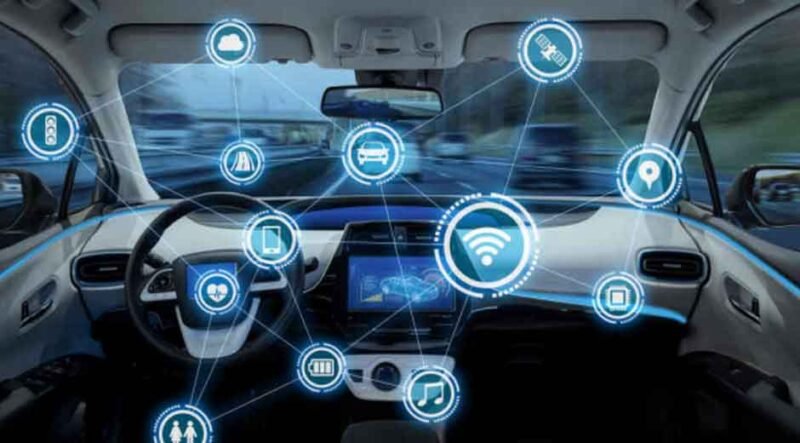
The used car industry is undergoing a vast transformation. What was once a business which was defined by physical showrooms, face-to-face negotiations and manual inspections, has now evolved into a digitally-driven marketplace that focuses on convenience, transparency and efficiency.
The pandemic didn’t merely accelerate the shift; it was fundamentally reimagined. According to an industry report from 2023, 78% of franchise dealers now feel the need to adapt their processes to this digital age, which is helping to evolve customer expectations, while 69% have already implemented at least one digital step in direct response to the pandemic.
Nowadays, car buyers begin their journey online with a researched approach before setting foot in a dealership. This includes comparison of models, reading reviews, checking best prices, and also taking virtual test drives, all this from the comfort of their home. Many AI-powered platforms, like virtual experiences, 360-degree online tours, and many inspection tools, have significantly changed how consumers interact with potential purchases. For purchases, this digital outlook is not just an option but a survival in this competitive marketplace.
This shift in behavior has helped an average buyer who visited multiple dealerships before making a purchase to many customers just coming in once after completing extensive online research. This digital approach has forced dealerships to reimagine their entire business model, be it marketing and sales or inventory and customer service.
Let us now explore the three compelling reasons why digitalization has become an important advantage of the used car industry’s evolution.
- Increased customer retention through superior experiences
In today’s time, including these technologies in your business is not just from a perspective of advantage over others but is also important for maintaining competition and long-term profitability.
Many customers look for an experience which is seamless and no longer want to rely solely on the salespeople for information. They much rather prefer a self-directed, transparent approach to research which gives them minimal friction throughout the buying process. To meet these expectations, it has not become critical for businesses to opt for digital solutions in the used car industry.
The benefits of digitalization are:
Reduced friction: Providing an intuitive digital experience results in customers choosing your business instead of your competition. The convenience of researching, comparing, and even purchasing vehicles online has now decreased the offline hassles of car buying, directly resulting in increased sales. Digital-first dealerships have reported an increase in customer satisfaction and shorter sales cycles compared to traditional operations.
Data-driven insights: Digital platforms now allow businesses to collect and study consumer behavior, which helps them to make more informed decisions. This data can help to create offers that are unique to the individual’s shopping patterns and preferences, which increases conversion rates. When a dealership can understand which vehicle a customer has eyed online, how long they have compared options, and which features they are looking for, the process becomes relatively efficient.
Streamlined operations: Digitalization removes the time, effort, and costs that go into maintaining physical records and paperwork. Digital contracts and online signatures have reduced wait times and administrative errors. This betterment in operations has translated to a smoother, better customer experience where the buyers spend less time on the paperwork and more time enjoying their new vehicle.
When combined, these advantages of digitalization create a smooth customer experience for what has been a traditionally exhaustive process, significantly improving customer satisfaction and loyalty to the business.
- Significant reduction in operating costs
The benefits of digitalization are also financial. These technologies have enabled businesses to construct online catalogs that include every detail of their inventory, from the specifications of the vehicle and their history reports to high-resolution images and virtual tours.
When this is improved, it includes AR/VR viewing capabilities, and these virtual showrooms almost eliminate the necessity of potential buyers to visit physical locations.
This transformation yields significant cost savings across multiple areas:
Reduced overhead: Dealerships can substantially cut expenses related to real estate, hospitality, printing, and other maintenance costs, which a traditional showroom needs. Some forward-thinking dealers have reduced their physical footprint by up to 40% while simultaneously increasing their sales volume due to enhanced digital tools.
Optimized workforce: Digital Operations require few on-site staff members, which allows for more strategic allocation of human resources- traditionally one of the largest expenses in running a dealership. Teams handling sales can now focus on much more important activities like closing deals and building relationships rather than routine administrative tasks.
Operational efficiency: Inventory management digitally includes automated customer communications and streamlined transaction processes, which reduce administrative burdens and associated costs. The dealers have reported a reduction in paperwork errors and duplicate data entry when these digital systems are implemented.
Marketing effectiveness: Digital marketing channels provide a higher return on investment in the automotive space as compared to the traditional advertising methods, with better targeting capabilities and results that can be measured. Dealerships can precisely target potential customers based on their preference for vehicles, buying timeline, and budget constraints.
The most innovative technologies in the automotive space are designed to specifically reduce operating costs while increasing customer experiences. Early adoption of these solutions provides an advantage and also financial benefits in the long run.
- Revolutionary improvements in the detection of vehicle damage
A very important process for used car dealerships is precisely assessing and documenting the vehicle condition. This inspection process directly affects the pricing decisions, consumer trust, and profitability.
Traditional manual inspections present several challenges:
- Resource intensity:Physical inspections require significant time, specialized expertise, and dedicated personnel. A thorough inspection can take hours to complete correctly.
- Consistency issues:Human assessments often introduce subjectivity and potential inconsistencies in evaluation standards. Different inspectors may notice other issues or assign varying levels of severity to the same damage.
- Limitations in scalability:Turning towards manual inspections can result in costly and complicated situations, which can cause inventory to increase in volume. This often creates problems in the purchase and sales process.
- Challenges in documentation:Maintaining the records with photographs and detailed notes is tiring in traditional systems and can lead to potential problems or information being incomplete.
- Digital technology is changing this element of the used car business. Companies like Inspektlabs are pioneering AI-powered vehicle inspection solutionsthat can improve efficiency and accuracy.
- Inspektlabs has developed sophisticated machine-learning algorithms trained on more than 30 million vehicle images and videos. Their technology enables dealerships to:
- Simplify the process:Simply upload a 360° scan (photos or video) of any vehicle.
- Receive instant analysis:Get comprehensive vehicle condition reports in a matter of seconds as compared to hours.
- Access to detailed documentation:Reports include in-depth details and concrete information regarding the damage type, size, and location of the vehicle, which truly helps to create an objective record that helps to build trust among the customers.
Maintain consistency: Every vehicle is evaluated using the same criteria and standards, eliminating subjective variations between different inspectors.
These digital inspection tools help to drastically reduce the time, cost, and effort associated with vehicle assessment while simultaneously improving accuracy and transparency. The result is not only operational efficiency but also enhanced customer trust through consistent, objective vehicle evaluations.
The digital imperative for used car businesses
The post-pandemic marketplace has fundamentally changed consumer expectations. Today’s car buyers have a high demand regarding digital-first experiences throughout their purchasing journey. For used car dealerships, adapting to this new reality isn’t just about staying current—it’s about survival.
Businesses that promptly implement comprehensive digital transformations can expect the following:
- Revenue growth:Digital tools expand market reach and improve conversion rates.
- Operational savings:Streamlined processes reduce overhead and improve efficiency.
- Enhanced customer loyalty:Experiences that are this smooth in nature help to build loyalty and repeat customers.
Competitive differentiation: Digital capabilities create meaningful separation from less adaptive competitors.
Conversely, dealerships that hesitate to embrace digital transformation risk losing market position, customer base, and, ultimately, profitability in an increasingly technology-driven marketplace.
As digital technologies continue to evolve, the gap between digitally mature dealerships and traditional operations will only widen. The message is clear: digitization isn’t just transforming the used car industry—it’s evolving what success looks like in this competitive space.
For forward-thinking dealerships, this digital revolution represents an unprecedented opportunity to build more efficient, customer-centric businesses that thrive in the new automotive retail landscape.
Conclusion
As we look to the future of the used car industry, the pace of digital innovation shows no signs of slowing. Emerging technologies like blockchain for transparent vehicle histories, advanced AI that can predict maintenance issues from visual inspections, and fully immersive VR showrooms that eliminate geographical limitations are already on the horizon.
Dealerships that have built strong digital foundations today will be best positioned to integrate these next-generation tools tomorrow, further widening the competitive gap. The most successful businesses will be those that view digitalization not as a one-time implementation but as an ongoing journey of technological evolution—continuously experimenting, learning, and adapting to changing consumer preferences and technological capabilities in this increasingly digital automotive landscape.

